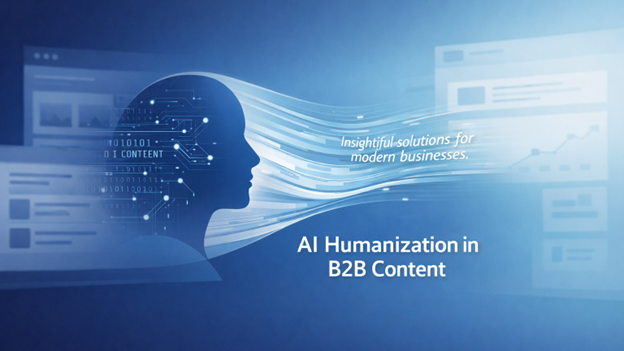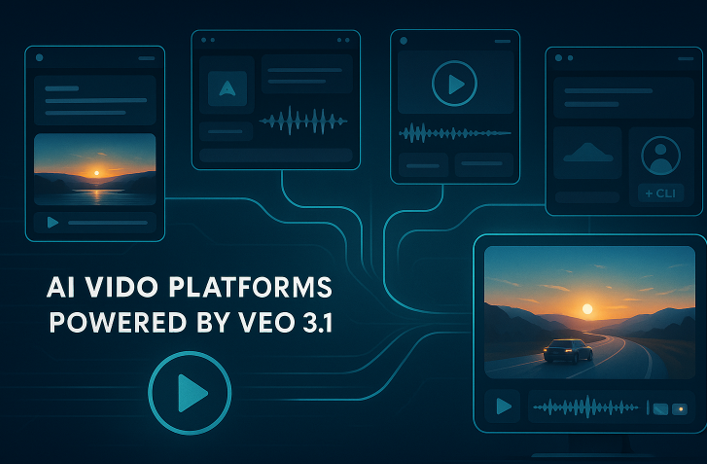Boost B2B Conversions: Web Design Tips For Irresistible Lead Generation
In the current digital landscape, a website's design is as vital as a company's physical storefront. It's often the initial touchpoint for potential clients, setting the tone for their entire experience. Design is not just about aesthetics; it's a pivotal tool for lead generation.
The parallels between a bustling brick-and-mortar hub and a thriving digital presence are striking. In this era, businesses recognize the importance of cohesive, functional, and aesthetically appealing websites, turning to services like Tucson Web Design. This trend underscores the importance of the right design principles for business-to-business (B2B) interactions in the modern era.
Understanding The Unique Needs Of The B2B Audience
B2B interactions differ fundamentally from consumer-focused ones. Key decision-makers in this sphere rely on the following:
Research-Driven Decisions: Unlike spontaneous business-to-consumer (B2C) purchases, B2B transactions are often a result of meticulous research and discussions.
Trust And Credibility: The transactions hinge on reliability and long-term partnership building.
Clear Information: Ambiguity can be a deal-breaker. Detailed product specs, transparent pricing, and clear terms and conditions often influence decision-making.
Businesses can better tailor their web design strategies by truly understanding the B2B audience's unique demands and expectations. This comprehension lays the groundwork for effective design principles tailored to the B2B realm.
Embracing Essential Web Design Principles For B2B
A B2B website serves as a digital handshake, where design efficiency is crucial. Essential elements to achieve this balance include:
Prioritizing Clarity And Simplicity: Your site should be intuitive. Clear menu structures, concise text, and relevant visuals streamline the user journey.
Ensuring Speed And Performance: Site performance affects user experience. Optimize images, utilize caching, and choose reliable hosting services to enhance speed.
Adopting A Mobile-First Design: Responsive design is non-negotiable, with professionals often accessing sites via smartphones or tablets. It ensures legibility, easy navigation, and optimal layout across devices.
Crafting Effective Calls-To-Actions (CTAs): These guide user actions. Whether 'Request a Quote' or 'Book a Consultation,' CTAs should be action-oriented, visible, and compelling.
Utilizing Intuitive Navigation And Site Architecture: Ensure the site's structure is logical, with critical pages easily accessible. Dropdown menus, breadcrumb navigation, and a search function can enhance user experience.
Optimizing For Conversion: Strategically place conversion elements, such as contact forms, chatbots, or sign-up forms. Also, ensure the checkout or lead capture process is as streamlined as possible.
Incorporating Interactive Content: Use videos, animations, and interactive infographics to engage users, explain complex concepts, and provide value.
Designing For Accessibility: Ensure that your site is usable by everyone, including those with disabilities. Use contrasting colors readable fonts and provide alt text for images. Consider tools and plugins that make your website more accessible.
Maintaining Brand Consistency: Across all pages, maintain a consistent brand image. This includes utilizing a consistent color scheme, typography, and design elements that line up with your brand identity.
Implementing Feedback Loops: Use tools like heatmaps, user surveys, and session recordings to gather feedback and understand how users interact with your website. This will inform design improvements and refinements.
Adopting these key design principles ensures that B2B websites appeal aesthetically and function optimally. But trust plays a pivotal role in the interactions beyond design efficiency.
Building Trust Through Web Design
In the B2B realm, website credibility is crucial. To convey reliability and a robust track record of successful collaborations, focus on these trust-enhancing components:
Incorporating Testimonials And Reviews: Authentic feedback from clients or partners can influence potential leads.
Showcasing Awards and Recognitions: Industry accolades cement your position as a leader and innovator.
Displaying Client Logos And Partnerships: Aligning with known brands can boost your brand's trustworthiness. Beyond design, content is pivotal for establishing credibility and authority.
Leveraging Content To Enhance Web Design
Content not only drives engagement but also cements authority in your domain. The quality and purpose of your content can shape decision-making. Ways to elevate your content strategy encompass:
Case Studies: Detailing past successes can demonstrate your expertise and results-driven approach.
Whitepapers And E-Books: Long-form content can educate potential leads, nurturing them through the sales funnel.
Informative Blogs: Address industry trends, challenges, and insights through well-researched articles.
FAQ Sections: Address common concerns and questions, establishing trust and clarity with potential clients.
Visual Content: This includes video content, webinars, infographics, and more. Use them to engage viewers, explain complex topics, and enhance articles.
Rich, relevant content bridges the gap between businesses and their potential B2B clients. With a content strategy in place, businesses can explore advanced web design strategies to enhance their online presence further.
Exploring Advanced Strategies In B2B Web Design
To stand out in the B2B digital space, beyond foundational principles, advanced strategies are essential. Take a closer look at these elevated techniques:
Creating Dedicated Landing Pages: Dedicated landing pages can funnel and convert targeted traffic more efficiently for specific campaigns or products.
Going Beyond Basic B2B SEO: Integrate industry jargon, niche keywords, and optimize for voice search to improve online visibility.
Personalized User Experiences: Use AI and machine learning to personalize web content based on the user's past interactions, preferences, or location.
Optimized Checkout And Lead Capture Processes: Streamline the lead capture or purchasing process, minimizing steps and reducing friction.
Engaging With Interactive Elements: Tools like cost calculators or industry-specific quizzes can offer value while capturing lead information.
Chatbots And AI Assistants: Offer real-time assistance and enhance user engagement.
Virtual Reality (VR) And Augmented Reality (AR) Integrations: Offer immersive product demonstrations or virtual tours, especially useful for B2B businesses in real estate, manufacturing, or training sectors.
By pushing the boundaries of traditional design through advanced techniques, B2B websites can stand out in the digital landscape. However, while pushing boundaries, it's essential to remain cautious of common missteps.
Avoiding Common Web Design Pitfalls
Web design oversights, even minor ones, can impede B2B interactions. By being aware of potential pitfalls, you ensure a seamless user experience. Strategies for maintaining an optimized site comprise:
Preventing Information Overload: Instead of flooding pages with data, focus on key information and utilize white space.
Ensuring Mobile Compatibility: Regularly test your site on various devices to ensure a consistent user experience.
Customizing CTAs: Avoid generic "Click Here" buttons as they lack appeal. Customize CTAs based on the content and user journey.
Understanding Specific B2B SEO Requirements: Update your SEO strategy with industry trends.
Showcasing Essential Trust Signals: Regularly update testimonials, case studies, and certifications.
Applying Regular A/B Testing: Iteratively test design elements, CTAs, or content placement to find the most effective configurations.
Awareness of potential pitfalls ensures a more consistent, user-friendly experience on websites. With these best practices and avoidance strategies in mind, let's recap the holistic importance of B2B web design.
Concluding B2B Web Design Insights
B2B web design transcends aesthetics; it's about trust, communication, and conversion. With an understanding of the B2B audience and strategic design choices, businesses position themselves for optimal lead generation in an evolving digital landscape.









